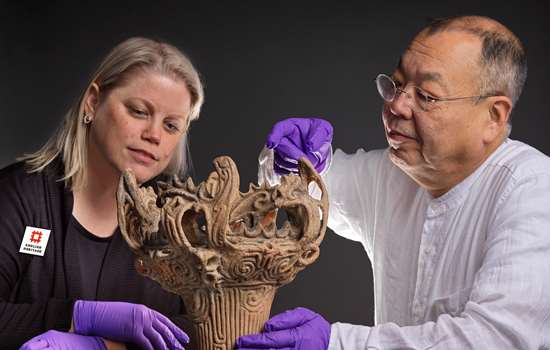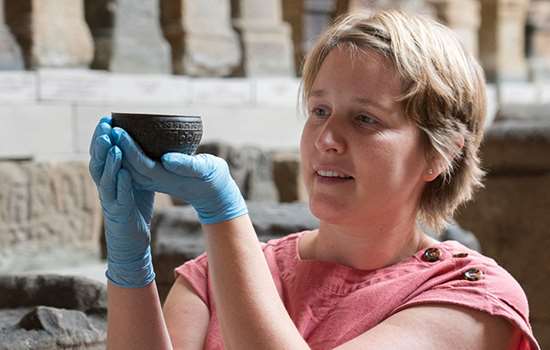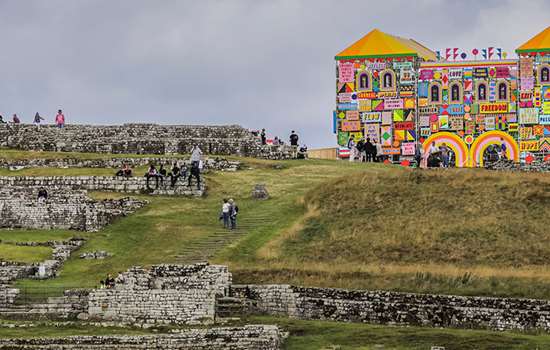21/11/2018
Margaret Lockwood is the latest woman to be celebrated with a blue plaque
Following the unveiling of Margaret Lockwood's plaque, Dame Judi Dench has praised the scheme and urged the public to nominate more women.
Actor Margaret Lockwood, star of Alfred Hitchcock's The Lady Vanishes, has been celebrated with a blue plaque at her South London home.
Lockwood's plaque was met with support by fellow actor Dame Judi Dench who is now urging the public to nominate more women.
Lockwood lived at 14 Highland Road in Upper Norwood when she first moved to London as a child in the early 1920s.
Making a name for herself in the 1938 Hitchcock film, Lockwood went on to become one of the most popular female actors of her age. She appeared in numerous titles including Night Train to Munich (1940), The Man in Grey (1943), and The Wicked Lady (1945).
Lockwood is now among the 14 per cent of women who have received blue plaques. Earlier this month, English Heritage announced a call to action for more female nominations to address the gender imbalance.
Dame Judi Dench said:
'If people want to find out about our London history, they can go and just stand for a minute outside and look at a house where you know that person has lived – I think that's just wonderful.
'So far the scheme honours some brilliant women; Florence Nightingale, Ava Gardner and the Pankhursts, but there are many, many more unsung female heroes who deserve recognition.
'So nominate the women you admire, the women who did great and remarkable things throughout history, and the women who did not go quietly, English Heritage needs your help.'
Anna Eavis, Curatorial Director and Secretary of the English Heritage Blue Plaques Panel, said:
'We're thrilled to have Dame Judi Dench's support for our 'plaques for women' campaign, especially as we unveil one to the screen legend Margaret Lockwood.
'The London Blue Plaques Scheme is over 150 years old and with that legacy comes an historical gender imbalance. The scheme relies on public nominations and that's why we need them to send us their suggestions.'
Other people prominent in theatre and film who have been recognised under the London Blue Plaques Scheme include Richard Burton in Hampstead, Charlie Chaplin in Kennington, Ava Gardner in Knightsbridge and Sir John Gielgud in Westminster.
Read Judi Dench's comments in our blog about the importance of the scheme following the unveiling of Sir John Gielgud's plaque in 2017.
How to nominate a London blue plaque
The London blue plaques scheme celebrates the link between significant figures of the past and the buildings in which they lived and worked. In order to receive a blue plaque, figures must be judged to have met a number of criteria, including the following:
- They should have made a great and lasting impact on society
- The London building in which they lived or worked should still survive
- They should have been dead for more than 20 years
Blue Plaques for Women – Key Statistics:
- The London blue plaques scheme was founded in 1866
- The first plaque to a woman was erected in 1876 and honoured the actress Sarah Siddons, although this no longer survives
- By 1905, just five women – one actress and four writers (including George Eliot) – had been commemorated with a plaque
- By 1986, when English Heritage took over the London blue plaques scheme, the number of blue plaques celebrating women was 45
- Since then, English Heritage has unveiled more than 80 London blue plaques to women – 60 per cent of the total dedicated to females – including plaques for Ada Lovelace, the pioneer of computing, Rosalind Franklin, the scientist who helped discovered DNA, and Nancy Astor, the first woman to sit in parliament
Nominate someone for a blue plaque today.
Discover more about Margaret Lockwood on our blue plaques webpage.
For more from English Heritage, follow us on Facebook, Twitter and Instagram.



